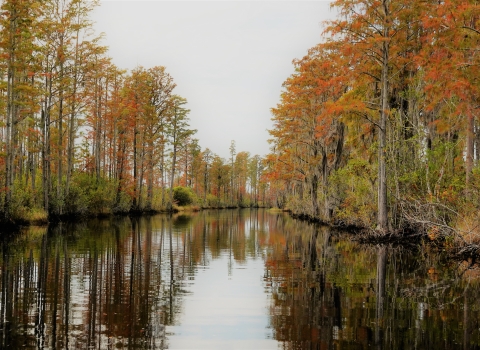Being established for 120 years, Mammoth Spring National Fish Hatchery (MSNFH) has seen a bountiful history. Part of that history resides in an un-seen fixture, plumbing. Before the MSNFH was established, during the 1800’s, when the sight was home to a private hatchery, the first plumbing materials were made from wood, wire, and tar. Then, once MSNFH was in operation, many of the pipes were upgraded to either clay or iron. In the 1950’s, after years of use, the pipes were again upgraded with the popular concrete pipe. These pipes worked well, while they were working, but like most things, time took its toll on them too. In recent years, the old concrete pipes were not performing effectively, and the station’s production ponds, and culture buildings were not receiving ideal water flows. Therefore, in early November 2022, the task of upgrading the pipeline system began and the old concrete pipes were abandoned in place and new C900 PVC pipes were installed. During the installation there were a few underground challenges; however, this was not a huge surprise considering how long the concrete piping had been in the ground. The new plumbing also allowed some gravity flow water to reach a few of the lower elevated production ponds, allowing for water flows to some ponds without the use of the pump, which saves money. The new plumbing also eliminated numerous leaks, thereby allowing the entire plumbing system to build up additional pressure and consequently, increased flows to all the ponds. This work also included installation of new valves to each of the ponds, including water supplies to the shallow ends of the ponds. This work replaced several old valves that have not been used in years due to mechanical and leaking issues. Some of the old valves on the shallow ends of the ponds were buried below several inches of soil. Also, a few ponds got valves where valves did not previously occur. Some ponds were never equipped with a shallow water supply on the back side of the ponds, which made it very challenging to control the water quality within those ponds. All new valves will help “flush” water directly through the ponds and minimize “dead” oxygen zones, allowing better water quality to reach more fish. Early March 2023, the project reached completion when the last scoop of the dirt was moved, and the sound of flowing water could once again be heard on the hatchery grounds. The MSNFH is excited for the 2023 production year to get into full swing with the help of our new plumbing system.
Plumbing Into the Future
Even though these pipe may never be seen again their work will be evident




